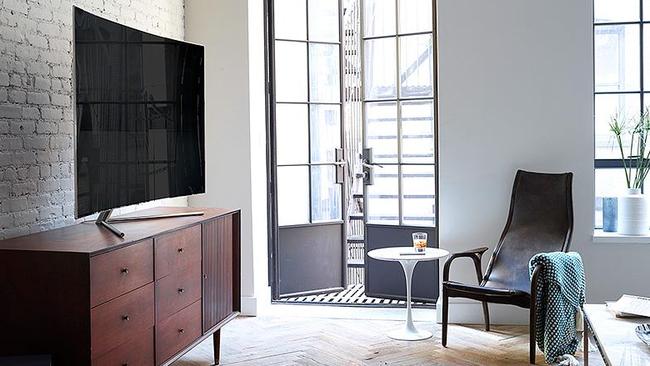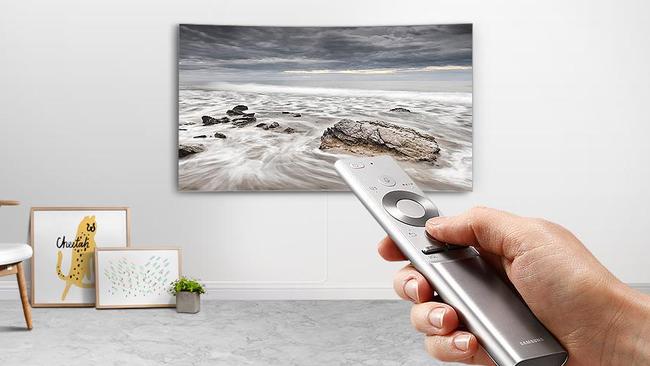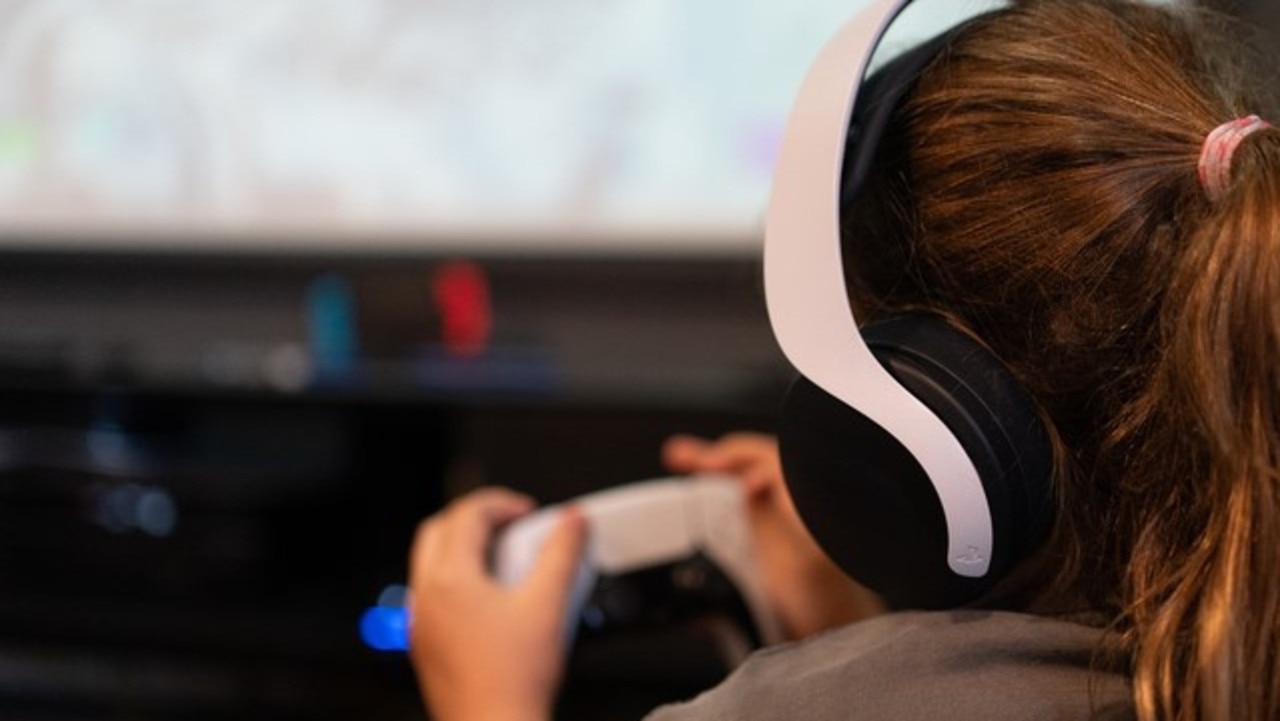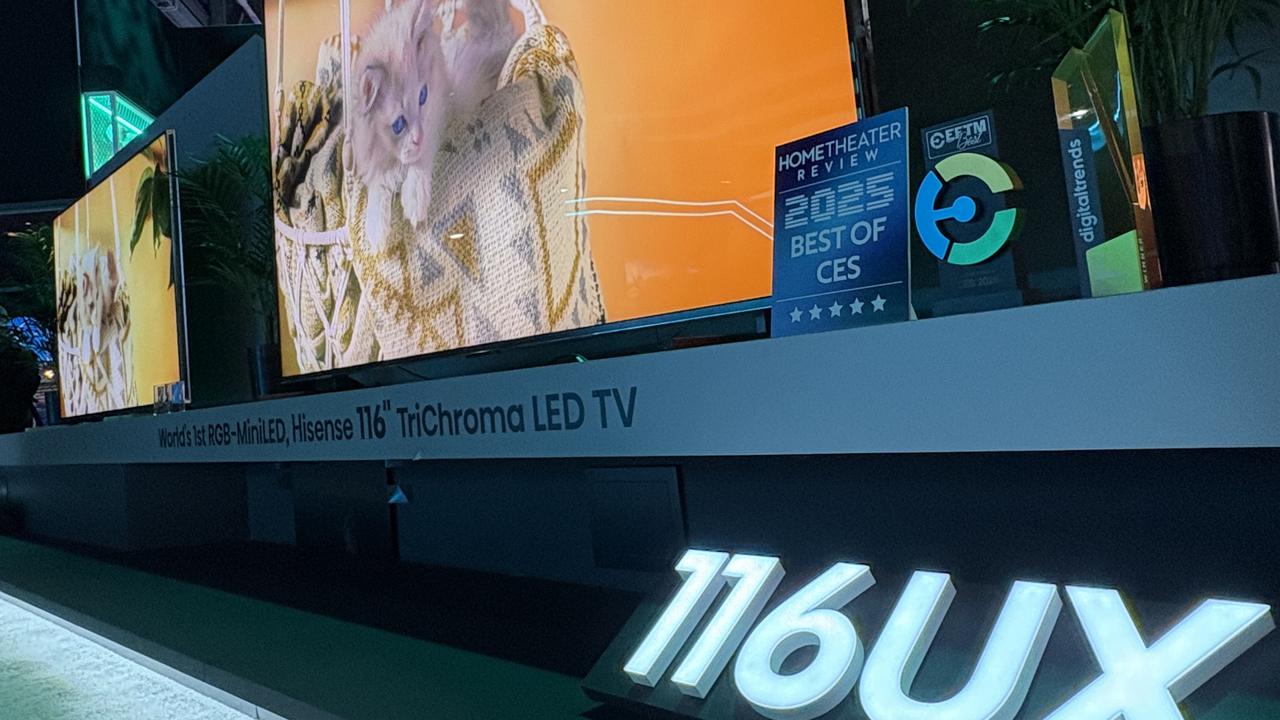Samsung 2017 QLED range might be expensive, but is it worth the money?
WHEN you can pick up a 65-inch Ultra HD 4K TV at the supermarket for $899, why would you pay four times that much?
REVIEW:
YOU can buy a 65-inch Ultra HD 4K TV from Aldi for $899, but there are some good reason to pay more than four times that much.
Sure, the cheapest model of Samsung’s 2017 QLED TV range will set you back $4,499 — a price tag that is hardly as excessive as it first seems when compared to the $39,999 model.
I am well aware how silly it must sound telling people to drop this type of cash on a television, especially given the fact I could only buy myself Hisense’s mid-range Series 7 Ultra HD TV.
But, journalism salaries aside, I feel if you have the money, Samsung’s QLED range is well worth the investment. Here’s why:
WHAT IS A 4K TV?
In short, 4K has enough pixels to fill four Full HD 1080p screens, which means it’s able to display four times the level of detail.
It must be mentioned you will need an UHD Blu-ray DVD player or internet over 15 Mbps to stream content in 4K, which limits how much you could actually watch at this point in time.
Although, the amount of content will only grow over time.
PICTURE QUALITY
At the core of the line-up is Samsung’s alloy coated Quantum Dot technology — tiny semiconductor particles around one billionth of a metre in diameter, engineered to emit light in its purest possible form.
So what exactly does this mean when you are watching?
In short, it improves the range of colours and better peak brightness.
It all has to do with Samsung’s ability to produce 100 per cent colour volume, which is a measurement of the colour gamut — the largest amount of colours that can be displayed physically — and the maximum brightness level of the display.
Having a larger amount of colours that can be displayed and higher brightness means the TV has more realistic, accurate and vibrant images, in both bright and dark scenes.
For this review I watched a 4K version of T he Revenant on Samsung’s UBD K8500 Ultra HD Blu-ray player on a 65-inch curved Q8 and the picture quality and detail was amazing.
While I am confident my Hisense is capable of delivering an excellent 4K picture quality, I do not remember being as wowed by tiny details such as the sun’s rays through trees when I first watched the film at home on my Xbox One S.
One thing I can attest to is the TV’s ability to offer better viewing angles, while there was some picture quality lost as I moved around the room, it was much better than I had experienced with other televisions on the market.
I also believe the hype around Samsung’s “adaptive brightness”, which promises the same picture quality no matter the light emitted from the room.
Admittedly, I could test only the natural and controlled light available for the short time I used the Q8, but on this limited experiment I was impressed.

CLEANER AND SMARTER
Samsung’s Q8 and Q7 series will be available in 55-inch, 65-inch, and 75-inch models, which come in either flat or curved screens — the latter is believed to offer a more immersive experience with wider viewing angles.
However, the Q9 will be available only with 65-inch, 75-inch, and 88-inch flat screen displays.
The screen comes with a “Studio Stand” that looks like an easel with a painting or a small, swivel based “Gravity Stand”. Or there is a “no-gap wall-mount” for the QLED range so the television will sit 100 per cent flush against the wall. Although I think a mounted curved display would look slightly strange.
The display has almost no bezel around the screen and has a sleek all-metal design.
And there are messy cables with a separate breakout box that houses all of the ports you would expect on a television — HDMI, power, ethernet, USB, Antenna and so on.
Unfortunately the breakout box is not completely wireless, but the good news is it connects to the TV via a semitransparent optical fibre cable offering five metres in length.
To keep the connection as hidden as possible, the stands have been designed to run the cable inside them.

While I have found navigating smart TVs varies greatly between brands, I feel Samsung has hit the mark with its latest Tizen operating system.
One of the most exciting features of the OS is the ability for the breakout box to automatically detect connected devices and display them in a clean ribbon bar on the bottom of the screen.
I put this to the test with the Q8 and found it to work perfectly when I attached an Xbox One S and 4K Blu-ray DVD player, so I have no reason to see why this wouldn’t work for any other devices.
Also located on the ribbon bar are all of the location-appropriate apps you would expect to come as standard on a 2017 device — think Netflix, Stan and YouTube.
While including these apps is nothing groundbreaking, the device takes things one step further and offers the ability to explore the apps without having to exit your current content.
This means you can browse your Netflix account to find out what you want to watch, without having to exit the football match you are currently invested in.
The TV also has a Spotify-esque feature, which allows the QLED to identify any song currently playing on the TV.
Continuing with its efforts to minimise clutter, Samsung’s new range comes with a single remote that has the ability to control the TV and almost all connected media devices — it also includes dedicated Voice Recognition button.
In order to offer a contingency plan for a lost remote control, Samsung’s SmartView app offers all of the same functionality directly from a smartphone or tablet.
Despite being unable to test this feature at the time of review, the company assures me it can do everything the remote control can do including powering the TV on and off.

WHAT ABOUT THE SOUND?
The TV itself has downward firing speakers located on the bottom of the display and they offer more than enough quality for standard viewing.
However, for the purpose of the review the Q8 was connected to Samsung’s MS6501 soundbar with Dolby Atmos.
While there are obviously no constraints with soundbars that can be attached, Samsung’s have been purposely designed to fit with the aesthetics of the TV.
This means if you opt for the curved display, you can purchase a soundbar that is shaped the exact same trajectory as the TV itself — the same is obviously true for the flat screen.
With clutter-saving techniques used throughout the design process, Samsung’s soundbar is no different and has a built in subwoofer to save on space.
While there is the option to add an external sub, there is really no need as the product’s bass performed more than sufficiently.
The product offered great sound and worked good enough for me to be impressed, but as it doesn’t come as standard, I would be more likely to recommended LG’s Dolby Atmos soundbar with upward firing speakers if you were wanting a product to capitalise on the Dolby’s multidimensional home theatre technology.
FINAL THOUGHTS?
When it comes to high-end televisions, Samsung are obviously one of the major players in the market and its latest QLED range does not disappoint.
With other heavyweights like LG and Sony yet to offer a true hands on experience with their forthcoming OLEDs, it is hard to make an accurate comparison between the brands.
With that said, based on my experience with Samsung’s QLED range, I would have no hesitations recommending the TV to anyone looking to upgrade this year.
While it obviously a large finical commitment, I encourage you to embrace your inner-baller and make it rain.
Do you think you will be purchasing a TV from Samsung’s QLED range? Continue the conversation in the comments below or with Matthew Dunn on Facebook and Twitter.
Samsung provided the writer of this story overnight access to a QLED TV for review purposes.



